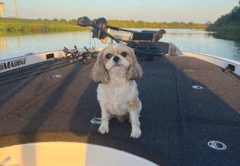Just like it wouldn’t be a good idea to paddle a canoe down a set of Class 5 white water rapids, it wouldn’t be a good idea to paddle an inflatable kayak through water with heavy debris or sharp obstacles. Whatever the environment, there is a kayak designed for it. So what do we need to look for when buying a kayak?
Before you buy, it’s important to know a little bit about the different types of kayaks. Each style is designed for a specific purpose, and using the wrong model is at best frustrating and at worst dangerous.
One of the best ways to learn how design can affect performance is to try out a few different models from the dealer or a rental shop. The length, shape and weight can all have a profound influence on how it moves in the water.
Recreational kayaks are the most popular style. You’ll find these models to be stable, inexpensive and easy to use. These models vary in size from 10 to 12 feet in length.
Recreational kayaks are best suited for the calmer waters of protected bays, lakes and ponds since they are not as adept in handling currents, waves and wind.
Touring kayaks, often referred to as sea kayaks, provide better performance than recreational models, but are often much more expensive. They’re usually longer, between 12 and 17 feet, narrower than recreational models, and have a covered deck allowing them to dissipate oncoming waves. Touring models are ideal for traveling long distances and perform better in more challenging conditions.
Sit-on-top kayaks, lack the covered deck of sit-in models and thus are more popular for warmer climates. In cold temperatures, they provided less protection from the elements then sit-in models. They’re usually used for recreational purposes, though they’re also quite popular for swimming, diving and fishing. Sit-on-top allow easier access for individuals who have limited range of motion or who have physical limitations.
Fishing kayaks encompasses any model that can accommodate the additional accessories for anglers, whether it’s rod holders, extra storage space, or bait wells. They come in many different designs although added stability is usually a preferred feature in a fishing model.
Whitewater kayaks as the name suggests are designed specifically for navigating whitewater rapids. They’re usually short with a curved bottom to better navigate rapids. Being short and stocky, they require the use of more energy over longer distances.
Inflatable kayaks are a good option for people with limited space or need an additional degree of portability. Modern inflatable models are durable and versatile, and many can perform quite well on the water.
Some information for this article was obtained through Best Kayak Reviews. Prior to purchasing your first kayak, do as much research as you can and speak to multiple dealers or outfitters. Also give your kayak a test drive, you wouldn’t buy a car without a test drive so why not ‘drive’ a few kayaks before you buy. Your best decision will be an informed decision, it will keep you safe and provide you with a much better experience when paddling your local waters.
So, take the time, find yourself, and go yaking.
At GS Outdoors, located at 5621 U.S. Hwy 27 N, Sebring FL, 33870, you’ll find a variety of kayak models to choose from. We’re happy to guide you in selecting a kayak that meets your needs and the outdoor experience of your dreams. Rent or buy, but give it a try.
[easy-social-share]






